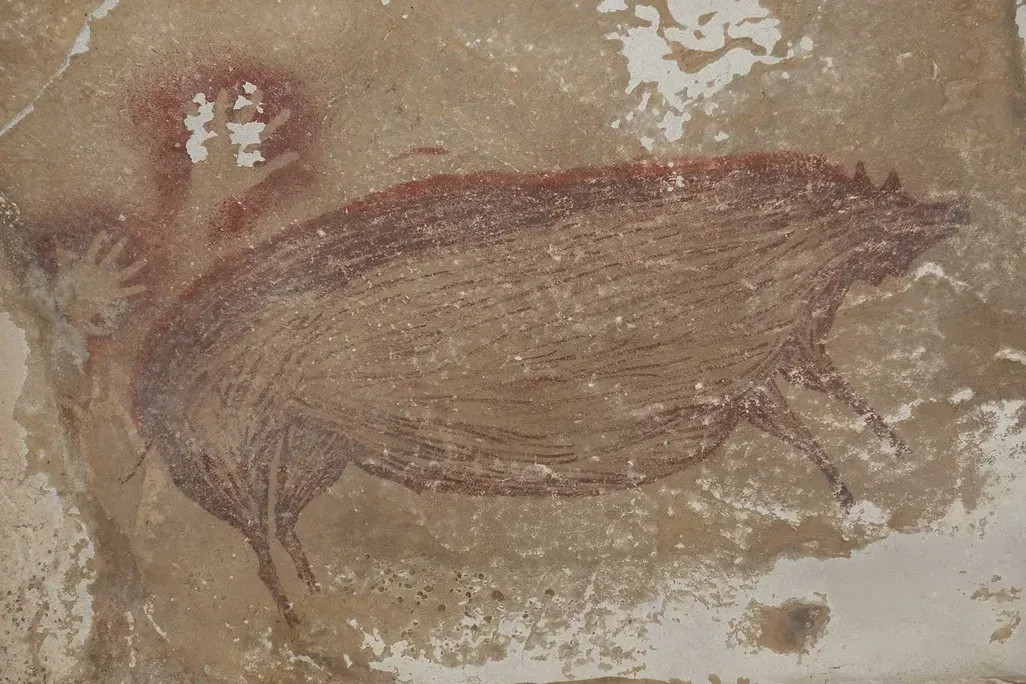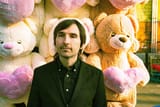#22 Bone Flutes + Cricket Wings
On why we should be grateful that we can make sounds without being eaten by a large animal

I wasn't expecting to be so moved by a book tracing the evolution of sound and hearing on good ol' planet earth but nestled within about as many science words as my brain could handle were compelling conceptions of "culture" and "aesthetics" that point to a very different process of making music. Let's start at the beginning...
A fossil of a cricket-like wing dating back 270 million years is currently the oldest known evidence of dedicated animal sound-making. In Sounds Wild and Broken, author David George Haskell supposes “as long as the breeding advantage was larger than the increased risk of predation, the song would be favored by natural selection”
That statement may sound a bit dry but in our current moment of man-made sonic abundance it is strange to consider how making purposeful sound was simply too much of a risk for the vast majority of the living history of the planet.
For land animals a big shift for sonic development was the slow evolutionary invention of wings allowing the insect to perform it’s mating and warning songs before deftly escaping hungry predators. Prior to that, sounds may have been limited to incidental sonic moments like wind rustling, thunder clapping, ice cracking, rocks tumbling, water lapping.

A flute made of bone from the ice age, roughly 40,000 years ago, was found in a cave in Germany and is the oldest known human-made musical instrument. Haskell points out this means the activity of playing music is four times older than the invention of agriculture! Some archeologist were surprised to find such an time-intensive, intricate, yet technically frivolous artisanal work in a time of ice age scarcity.
Haskell writes that humans belong to a small group of animals who are “vocal learners” and he defines culture as "the social transmission of behavior and traditions". I like the broadness of that definition, how our species needs these “social transmissions” to understand our place in the world and co-evolve. It makes the creation of culture so much more than just a bundle of signifiers learned online, disconnected from place or lived experience. This context also makes corporate co-opting of cultures even more egregious.
Many of my friends are cultural workers- writers, artists, performers, facilitators of events and we are all feeling the squeeze of being devalued. But there is something strangely comforting realizing how integral culture is to the evolutionary diversity and innovation of our species. How fundamental it is to our existence and survival.
The secondary reaction that arises is what norms and traditions are we actually transmitting?
Haskell argues for cultural aesthetics to be used to widen the circle of living beings we notice and therefore care about. While still appreciating the music, he talks about a modern concert hall and how it exudes human mastery and dominance over nature. He contrasts it to an event with sound artists chosen to make pieces in collaboration with the Brooklyn Botanic Garden and how their work opened up the senses and invited collaboration with other life forms.
Mass produced recorded music is such a new experiment and I think we are still grappling with its various effects on our species. If culture is a transmission, is it even possible without wells of attention and time for listening and engaging?
How might we expand the idea of culture to include our non-human neighbors as well as works that can’t be captured as commodities? I only have faint ideas but I know something is vastly out of balance right now and I appreciate Sounds Wild and Broken for opening up new questions to guide my work and new appreciation for our ability to sing without being eaten by an apex predator.
Upcoming Show: The Owl Music Parlor in Brooklyn Oct 17
Thank you! Feel free to email me to stay in touch and consider switching to a paid subscription on the www.mutualbenef.it to help subsidize my slow process of creating music 😄
Gratefully, jordan
